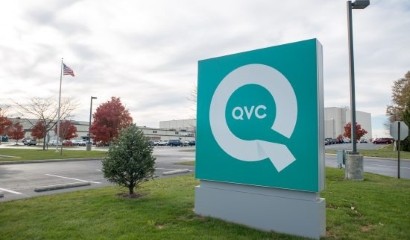‘The hype is over’ – sustainability-linked loans wane in popularity as CEEMEA borrowers shift attention to broader ESG structures
The advent of ESG (environmental, social and governance) financing in recent years brought with it the rise of a seemingly dynamic product, the sustainability-linked loan (SLL).
The product, once touted as a game-changer for developed and emerging markets alike, was poised for exponential growth. Borrowers were attracted by the optics of entering into an unchartered market and a potential reduction in their cost of funding, and lenders were keen to bolster their ESG credentials.
But now, market participants tell Debtwire the product is no longer in vogue.
The SLL is an instrument containing predetermined sustainability performance targets (SPTs), which depending on the borrower’s fulfilment, can lead to a change in the economic characteristics of the facility. Examples of common SPTs include the reduction of greenhouse gas emissions and improvements in the energy efficiency ratings of buildings and/or machinery owned or leased by the borrower.
Proceeds from such loans are not necessarily earmarked for ESG purposes, but the facility is designed to incentivise borrowers to improve their sustainability standing.
In short, should a borrower achieve certain key performance indicators (KPIs), it can benefit from a reduction in its margin. Should it fail to meet those targets within a certain test period, as outlined in the loan documentation, the borrower can be penalised via an increase in its margin.
According to Dealogic, Ghana Cocoa Board (Cocobod), scored the first sustainability-linked loan across CEEMEA in March 2019 with a USD 300m three-year credit facility. That loan was priced at 295bps over Libor, with a net margin tightening of 15bps if the borrower met certain targets, including around the “empowerment of female farmers and increased sensitivity to child labour among community leaders”.
Dwindling activity
However, despite a number of large transactions in CEEMEA since then, including a USD 1.5bn three-year term loan raised in March by Emirates NBD, which included two environmental and one social KPI, the product is largely waning in popularity, market participants told Debtwire.
According to Dealogic, since the start of the year, USD 5bn has been raised in the SLL market in CEEMEA, down from USD 10.6bn in the same period in 2023 and USD 13.84bn in 2022. Activity was notably strong in 2022, featuring a jumbo deal from Bapco Energies, formerly nogaholding, despite overall syndicated loan volumes in CEEMEA dropping from 2021.
Though the overall size of the market has shrunk, some bankers insist that the number of transactions has remained relatively steady, owing to smaller borrowers entering the space.
Poland-based data center operator Atman is one of those borrowers, having signed a PLN 1.35bn (USD 336m-equivalent) dual-currency five-year deal in March.
For example, so far this year, despite year-on-year SLL volumes shrinking by 47%, the number of borrowers in the market has only shrunk by 29% from 17 borrowers in YTD23 to 12 in YTD24.
That is a sign, according to one Dubai-based loans banker, that the market is still attracting interest.
However, increased scrutiny around targets, lack of borrower-lender cohesion and the absence of a worthwhile economic benefit are some of the reasons why more borrowers are shunning the product.
“The hype is over for SLLs,” said one London-based loans banker, noting that was the case even in developed markets like western Europe. “Borrowers are all thinking KPIs are too stretched. For a modicum of improvement in margins, the operational exercise is enormous, from getting an SPO (second party opinion) to teams being recruited just for tracking performance.”
That, the loans banker said, had pushed some borrowers to opt for broader facilities, such as use-of-proceeds loans that align with a borrower’s ESG or green framework.
Cons beat pros?
Several loans bankers polled by Debtwire concurred that the SLL product entails more hassle than some perceive it to be worth. The first Dubai-based loans banker pointed to the relative ease of executing a green use-of-proceeds facility, with the borrower simply needing to provide proof that funds are earmarked for eligible projects as set out in their ESG financing framework.
In contrast, doing an SLL, that banker said, requires historical data, technological investments to achieve accurate measurements, consistent reporting and external auditing. The costs can quickly accumulate.
A second Dubai-based loans banker, who has worked on a number of SLL facilities across the MENAT region, reported that clients were returning with the feedback that it is simply too much work and too costly to repeatedly monitor and report against certain targets.
The economic angle has also waned in appeal. “The margin adjustment is insufficient – it’s typically a few basis points […] it does not move the needle too much for borrowers,” the second Dubai-based banker continued.
When the market was still in its nascent phase, the product typically only featured a positive, downwards margin adjustment. That has now changed, with a two-way margin ratchet exposing borrowers to both pricing and reputational risks.
Many emerging market lenders, including even the local players, now have exclusive sustainable finance or ESG-focused teams, which has led to a tightening in internal policies.
Just how ambitious KPIs are has been brought into the spotlight, market participants said. That also means that targets now have more layers of bureaucratic red tape to pass through.
Bankers have, naturally, come under increased criticism for allowing “easy” targets in order to move up the SLL league tables.
One loans banker based in Johannesburg concurred. “There are more questions being asked on targets and whether these are stretched enough […] the UoP transactions, I’m seeing, are easier to get across the line.”
Borrowers across CEEMEA, too, told Debtwire they are less willing to entertain KPI-linked facilities.
“We are really striving to meet [emissions] targets,” said a funding official at a large United Arab Emirates-based borrower that chose to remain anonymous. “But the problem with setting these targets in stone with an SLL is that we get penalised if we don’t meet them, and if we make them too lax, then banks get accused of greenwashing. It’s a tricky situation of trying to find the balance between a commercially-sensible approach and trying to incentivise companies to reduce emissions.”
For some borrowers, making continual progress in the SLL market is limited, subsequently hindering the issuance of such instruments. In Central and Eastern Europe, borrowers have been meeting their targets and cannot continually improve on them, which in combination with stricter reporting and administration regulations, has deterred borrowers from the market, market participants previously told Debtwire.
Turkish readjustment
Borrowers are instead showing more interest in broader, use-of-proceeds (UoP) facilities, with the SLL market losing interest from some of the key drivers in the space in CEEMEA.
In the first half of the year, a number of Turkey-based bank borrowers turned their backs on the KPI-linked facilities they had eagerly populated in 2021, instead opting for sustainable, use-of-proceeds facilities, as Debtwire pointed out in March.
Akbank and VakifBank are some of those that, in recent months, have made the conscious decision to align loan transactions with their sustainable finance frameworks.
A source close to some of those deals noted that in the case of the Turkish banks, who typically borrow 367-day dual-currency facilities, the SLL had proven not to be a viable funding option.
“These deals are short-tenor […] the borrowers realised that it’s difficult to find ambitious enough KPIs they could complete in one year. Turkish banks have learnt the hard way that a one-year SLL is probably not feasible. Most borrowers now want to have their own ESG frameworks so it is easier to align a UoP transaction with that, similar to the bonds space,” the source close said.
That source admitted that some of these borrowers had been penalised for missing certain targets by their test dates. The Loan Market Association (LMA) recommends the setting of annual SPTs on SLLs and has provided guidance to the market around the review requirements for that.
A second source close to the aforementioned deals noted that a typical structure in the Turkish FIG space had been to include three KPIs on a 367-day loan, with a margin adjustment of 2bps for each target met or missed.
“We are talking about preparing a performance report up to four times a year on a one-year facility. This is not easy,” the second source close said. “Now, under the [UoP] framework facilities, the borrower just has to prepare an allocation report once a year.”
Appetite for UoP facilities is expected to only increase. One Vienna-based loans banker said that was especially the case for bank borrowers, who, in order to issue certain green or ESG-related securities in the covered bond market, need to prove they have an eligible pool of green assets to back the instrument.
Issuance gap
However, some market participants insist that the product still has its place, with a handful of deals featuring the mechanism in the works across CEEMEA.
Despite market leaders like Akbank and VakifBank stepping back from the SLL market this year, a number of Turkish lenders chose to remain. That cohort includes the Export Credit Bank of Turkey (Turk Eximbank) and Ziraat Bankasi.
Additionally, the first source close to the Turkish deals remained adamant that there is still a gap in the market for the SLL, particularly in the case of longer facilities of four-to-five years.
A third Dubai-based loans banker said they were continuing to receive interest in the product from borrowers in the region, including those that want to prove their ESG credentials, but may not have the existing eligible assets to do so.
Activity could rebound in coming years when existing loans come to maturity and borrowers choose to refinance in the same format. According to Dealogic, there is USD 8.68bn of SLL debt maturing in CEEMEA in 2025, USD 10.15bn in 2026 and USD 7.86bn in 2027.













